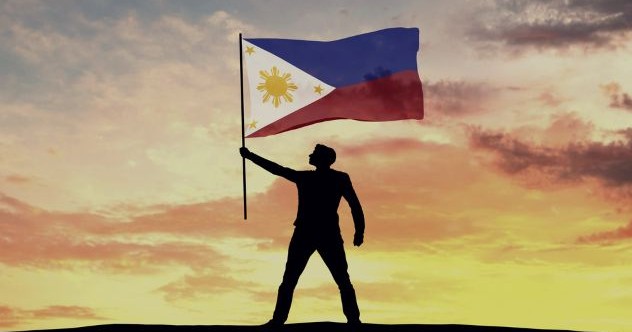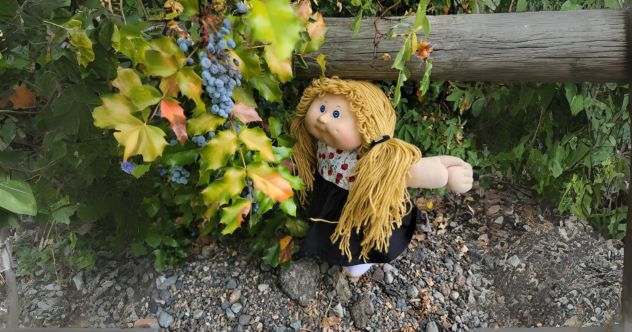Now Reading: 10 Obscure Facts About America’s Empire in the Philippines
-
01
10 Obscure Facts About America’s Empire in the Philippines
10 Obscure Facts About America’s Empire in the Philippines

When the United States acquired the Philippines from Spain in 1898, she first had to forcibly assert her rule and put down the Filipino struggle for independence. After the bloody war that betrayed all of America’s principles and idealism, the U.S. began to atone in some measure for her sins, and though imperialist greed and exploitation were still evident, there was also a genuine desire to improve the colony’s conditions and prepare the Filipinos for eventual self-rule. The Philippine colonial experience has been summarized as being “300 years in a Spanish convent, 50 years in Hollywood.” Except for the Catholic faith, it was Hollywood which made a deep and lasting impression.
Related: 10 Crazy & Hilarious Micronations That Want to Be Real Countries
10 “Little Brown Brothers”
William Taft #3: The Philippines? (1900-1901)
Future U.S. President William Howard Taft was an Ohio judge when he was appointed to set up a civilian government for the Philippines. His first impression of the natives, “a vast mass of ignorant, superstitious people, well-intentioned, light-hearted, temperate, somewhat cruel, domestic, and fond of their families, and deeply wedded to the Catholic Church…” made him doubt their capacity for self-government.
Taft was nevertheless sympathetic to the Filipinos and referred to them as his “little brown brothers.” Genuinely wanting to improve their condition, he ardently set about his task, drafting a constitution with a Bill of Rights similar to that of the United States. Taft established a civil service system, public schools, healthcare facilities, and a transportation network. He purchased 390,000 acres (1,578 square kilometers) of church land from the Vatican for $7.5 million and distributed it to the peasants.
Taft, however, was not in favor of giving the islands immediate independence, preferring to bind them to the U.S. as a dominion, in a relationship similar to that between Canada and Great Britain. He promoted the Filipino Partido Federalista, which advocated statehood for the Philippines. His “policy of attraction” aimed to present the benevolent side of U.S. rule, by which he hoped to wean the people away from dreams of independence.[1]
9 The Thomasites
On July 23, 1901, the army transport Thomas left San Francisco carrying more than 500 male and female teachers bound for the Philippines. Many of those who signed up were idealistic young people who believed in America’s mission to educate and uplift her newly conquered subjects; others were driven by a sense of adventure. A few were opportunists and hucksters. These came in a steady stream in the following years and were dubbed “Thomasites” after the ship that brought the first batch.
The Thomasites were the foundation of the public school system. Among many things, they introduced children to the English language, and English rapidly became the country’s second language, elbowing out Spanish. The goal was to assimilate the people into American values. Thomasites introduced American fashion, sports (chiefly baseball), folklore tunes, manners, and customs. In a tropical country, Christmas was now associated with snow and Santa Claus.
In the process, Filipinos were made to forget their own heritage. Washington and Lincoln became their heroes, but their own freedom fighters were “brigands.” A totally alien way of life was suddenly thrust upon them. But despite these negatives, the school system did improve the Filipinos’ conditions and broadened their horizons. Education is the single most important contribution of the U.S. to the Philippines.
Many Thomasites became depressed and disillusioned and went home. But many also stayed on and continued their service. The Thomasites would be the forerunners of the Peace Corps.[2]
8 Why The Philippines Is Not a U.S. State
The Philippines: Almost a U.S. State? 🇵🇭
Despite the surprisingly successful effort to Americanize Filipinos, the Philippines was never admitted into the Union. Perhaps it never stood a chance. From the outset, Americans were dead set against making the islands a state. America, for them, was white, Anglo-Saxon (or of Northern European descent), and Protestant. Why would they want to contaminate the Republic with brown Asians who were largely Catholic with a Muslim minority? There was also geography: If the Philippines became a state, it would be the U.S.’s furthest frontier, and at 8,000 miles (12,875 km) away, its defense would be problematic. As early as 1910, former President Theodore Roosevelt deemed the colony indefensible.
American agriculture also had to compete with low-cost, duty-free sugar, coconut, and cordage from the islands. Businesses wanted out of the free trade agreement. As Sen. Huey Long of Louisiana put it, “We need to protect our own sugar industry. That is why we need to get them [the Filipinos] out of the way. We have no business being hooked up with them.”
Filipinos have never regretted not being a state.[3]
7 The Moro Rebellion
The Philippine American War Explained
The close of the Philippine-American War in 1902 did not mean the end of armed resistance to American rule. The Muslims of the island of Mindanao, called Moros (Spanish for “Moor”), continued the struggle even after their Christian brothers had accepted U.S. sovereignty. Led by the Sultan of Sulu, their guerrilla tactics, ambushes, and suicide attacks were a foretaste of what the Americans would face in Iraq and Afghanistan a century later. To fight the insurgents, the U.S. had to commit 25,000 troops under the command of Generals Leonard Wood and John J. Pershing.
The bloodiest battle of the war occurred in 1906 when a thousand Moro fighters, accompanied by their women and children, took refuge in a volcanic crater called Bud Dajo. Planning to attack, Wood, by then the governor, warned the Moros to move their families out of harm’s way. They refused, and a force of 750 Americans attacked anyway. Despite the fierce defense, the Americans were looking down from the rim of the crater by the third day. The Moros below were helpless against the machine guns and artillery. All but six people were massacred, including the women and children.
Wood came under heavy criticism back home for the action but was absolved of any responsibility. The rebellion was finally put down in 1913.[4]
6 Preparing for Independence
How did America Take The Philippines? – The History of The American Philippines (1899 – 1946)
“I would rather have a government run like hell by Filipinos than a government run like heaven by Americans,” Philippine Senate President Manuel Quezon once facetiously remarked. Filipinos may have been outwardly Americanized, but the yearning to rule themselves ran deep. In the beginning, Americans made all discussions of independence, even peacefully, punishable by imprisonment under the Sedition Law of 1901. Armed rebels, labeled “bandits” or “brigands,” faced the death penalty if captured.
The Partido Federalista, which advocated statehood, was the first political party to form. It never commanded popularity. As general peace settled over the country, the Americans finally allowed the formation of a legislative assembly modeled after that of the U.S., with the lower house composed of Filipinos. The Partido Nacionalista, advocating immediate independence, ran away with the elections. The Philippine Assembly of 1907 was the first opportunity for Filipinos to have hands-on experience in self-rule and a chance to prove themselves worthy of independence.
In 1916, the first official declaration to grant eventual independence was made by the U.S. It would be given “as soon as a stable government can be established” by an all-Filipino legislature with a Senate and House of Representatives. The penultimate step toward complete freedom was the inauguration of the Commonwealth in 1935. For the first time, a Filipino was officially installed as Chief Executive when Manuel Quezon was elected President of the Philippines. Except for a few powers the U.S. reserved for herself, the colony was now self-governing.[5]
5 Burnham’s Manila
Daniel Burnham: The Man Who Planned the Future Cities
To transform the capital of Manila into an American city, the authorities recruited the services of the famed architect Daniel Burnham, an urban planner for U.S. cities such as Chicago and Washington, D.C. After analyzing Manila’s layout and needs, Burnham came up with a plan in 1905 that drew inspiration from Paris, Venice, and Naples. “Possessing the bay of Naples, the winding river of Paris, and the canals of Venice, Manila has before it an opportunity unique in the history of modern times,” Burnham enthused.
The plan envisioned wide radial avenues converging on a government center, as well as green spaces and recreational areas. Burnham was given a free hand to realize his grand designs, something he could not do with his ideas for Chicago, where he had to get consent from citizens and civic leaders. The inhabitants of Manila had no such constitutional protection, and Burnham wielded what the Architectural Record called an “iron hand of power” over the city.
Tragically, very little of Burnham’s city remains today. His designs were only partially realized when World War II broke out. Manila was totally leveled by artillery in the vicious street, fighting to liberate it from the Japanese. Second to Warsaw, Manila, the “Pearl of the Orient,” was the most devastated Allied city in the war. People can only look back nostalgically to what Manila could have been.[6]
4 A Taste of the Adirondacks
Portrait Of A Hill Station Segment 4 – The Plan of Baguio
Summer in the Philippines is stiflingly hot. Americans sought escape in the cooler mountain regions, and a plateau up north caught their fancy. At 4,700 feet (1,432.6 m) above sea level, Baguio’s climate was likened to “northern New England in the late spring or early summer.” It reminded Taft of the Adirondacks and was called the “Switzerland of the Orient.” It was the perfect location for a summer capital. In 1903, a herculean effort by Filipino, Chinese, and Japanese workers carved out a winding road up the mountains to connect Baguio to the lowlands.
Once again, Daniel Burnham was given the task of planning the city. Unlike in Manila, he could create a truly American city from scratch here. He envisioned a compact garden city of 25,000 to 30,000 people and government buildings befitting a capital. More than a hundred convicts had their sentences commuted to work in the new Executive Mansion.
In 1909, the new city was officially chartered. Baguio’s landmarks—Camp John Hay, Leonard Wood Road, Brent School, Wright Park, and, of course, Burnham Park—still remind us that for the colonizers, it was a taste of home away from home.[7]
3 A Refuge for the Jews
An Open Door: Rescue in the Philippines: Refuge from the Holocaust | Manuel L. Quezon | Anything2Do
As Nazi Germany stepped up their persecution after Kristallnacht and prepared the way for the Final Solution, many Jews were desperate to leave for a safer haven. The U.S. was reluctant to take in Jewish refugees due to immigration quotas. It even turned back a shipload that had arrived in Miami, a third of whom eventually died in the Holocaust. But President Quezon was increasingly concerned, along with others in his circle—the High Commissioner Paul McNutt, Dwight Eisenhower, and Jewish-American businessman Alex Frieder. Deciding to sidestep quota issues, Quezon planned to bring in tens of thousands of Jews and permanently settle them in Mindanao. He even contributed his own land for the purpose.
From 1937 to 1938, 1,200 European Jews were able to escape to the Philippines. There followed 10,000 more when the Japanese invasion of Shanghai forced the Jews there to relocate. When the Philippines was invaded, they were even treated better than Filipinos and Americans. Ironically, they were actually protected by their German passports, as the swastika embossed on the front made the Japanese view them as allies. To be sure, the Jews also suffered, especially during the liberation of Manila. But it was preferable to dying in a crematorium in a Nazi death camp.[8]
2 The Only American Field Marshal
Battleline: General MacArthur and the US Liberates of the Philippines
No American is more revered by Filipinos than Gen. Douglas MacArthur. First arriving in the islands in 1903 as a 23-year-old second lieutenant, MacArthur was immediately in love with the country and its people. The Philippines became his second home. Unlike other Americans, he had no racial bias and easily became friends with Filipinos. He had a Filipina actress, Isabel Rosario Cooper, for a mistress. He was a “compadre”—a bosom buddy—to Quezon. When the latter became president, he made MacArthur Field Marshal of the Philippine Army, a rank no other American has ever held as it does not exist in the U.S. military. A lavish penthouse at the Manila Hotel was built just for him.
When the Japanese overran the Philippines in 1942, MacArthur was forced to flee to Australia but famously promised, “I shall return.” He regarded the Philippines as his own country and Filipinos as his own people. Their liberation had become a personal matter. When military strategists planned to bypass the Philippines for Taiwan, MacArthur turned to President Franklin Roosevelt and argued passionately that America had a moral obligation to liberate the islands.
Roosevelt was swayed, and MacArthur was able to keep his promise. In the rapture of liberation, Filipinos were even willing to forgive MacArthur for his decision to use artillery to flush out the Japanese from Manila, which totally destroyed the city. Four months later, the Senate proclaimed him an honorary Filipino citizen.
To Filipinos, MacArthur was a savior. When he returned one last time for a valedictory address in 1961, near-idolatrous adulation greeted him, and any critic was committing a species of blasphemy. In the hierarchy of Filipino values, “utang na loob” (debt of gratitude) ranks high, and this ensures that Douglas MacArthur will forever be remembered with fondness in his adopted country.[9]
1 Dependent Independence
The History of The Philippines After Independence (1946 – PRESENT DAY)
On July 4, 1946, America’s birthday, she fulfilled a promise by granting the Philippines its long-cherished independence. But was it real and total? The aftermath of the war brought staggering problems to the new nation. Rebuilding was the priority, and the U.S. was there with its dollars—with strings attached, of course.
The U.S. demanded that free trade be extended for another eight years, gradually increasing tariffs within 20 years. Americans would have equal rights in exploiting the country’s natural resources. The U.S. acquired a 99-year lease on military bases (reduced to 25 years in 1966). The U.S. was in the Philippines to stay. Neocolonialism notwithstanding, Filipinos still loved America, and politicians exploited this. As Ramon Magsaysay, perhaps the greatest Filipino president, said, “People like to see me with Americans.”
Independence seemed a sham, and Filipino nationalists in the ensuing decades sought greater ties with other nations to weaken the link with America. There was a search for a pre-colonial national identity by a people torn between being Asian and being imitation Americans. The U.S. was especially condemned in its support of the dictator Ferdinand Marcos, who was rescued from a possibly tragic end in the “People Power” revolution by his dear friend and admirer, President Ronald Reagan.
In 1991, the Philippine Senate rejected a treaty that would have extended U.S. use of the military bases. Nature also seemed to be telling the Americans they had stayed long enough when Mount Pinatubo erupted, damaging Clark Air Base and burying it in ash. It was finally abandoned, and along with the evacuation of Subic Naval Base, ended 90 years of U.S. presence.[10]
fact checked by
Darci Heikkinen






















